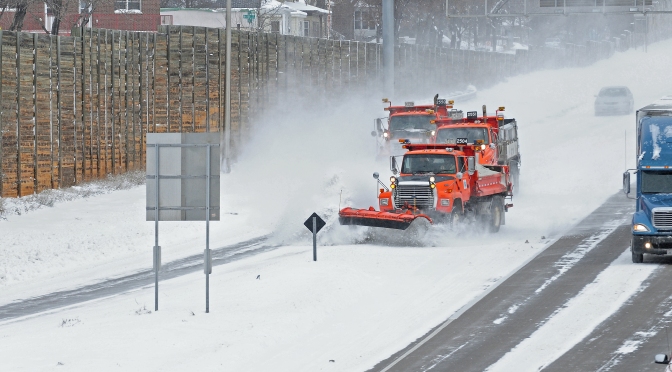Researchers at the University of Minnesota Duluth (UMD) have developed a system that can use highway loop detector traffic flow and weather data to determine when road conditions have recovered from a snow event. Currently, the Minnesota Department of Transportation (MnDOT) relies on snowplow drivers to estimate when roads are back to normal. The new system aims to relieve drivers of that burden and increase overall fleet efficiency.
In two previous MnDOT-funded projects, UMD researchers looked at using data from loop detectors along with weather station data to develop an automated system that determines normal condition regain time (NCRT) based on changes in traffic flow patterns. The goal is to improve the accuracy of road condition estimates and give dispatchers a big-picture view of traffic flow.

“This is a shift to different criteria,” says John Bieniek, Metro District maintenance operations engineer at MnDOT. “The bare lane regain time is now based on judgments from plow operators on the highways and phone calls to dispatchers. We could use the new system to quickly direct trucks to harder-hit areas within and between stations as they are needed.”
The latest project, led by UMD civil engineering professor Eil Kwon, transformed a previously developed computer model into a user-friendly, integrated computer system. The system includes a data management module, a module for target detector station identification and speed recovery function, an NCRT estimation module, and a map- based user interface that allows dispatchers to generate the estimated NCRT for a specified area. Dispatchers and supervisors can also use the interface to assess traffic flow variations, assign plows, and generate reports for past snow events.
The team tested the new integrated system on data gathered from I-494 and I-694 during two snow events in 2015 and 2016. Results show the system was able to successfully generate NCRTs that met or exceeded the accuracy of estimates by maintenance personnel.
“The system developed in this research can provide consistent and objective estimates of the NCRT by utilizing the traffic flow data that are currently available from the existing detection systems in the metro area,” Kwon says.
Another goal of the project was determining a data-derived definition of normal traffic flow for snow-cleared roadways. As part of this effort, researchers found that traffic resumed free-flow conditions after roads were cleared, but always at a slightly slower speed than on normal, dry roads. Researchers then developed a process to determine the “wet-normal” free-flow speed at each detector station based on the traffic flow pattern during a given snow event.
So far, the system has only been used with data from past snow events and has not generated results in real time. Going forward, MnDOT plans to fund additional work that will incorporate big data tools to allow the system to operate in real time—as storms happen—to improve roadway snow operations.
This article originally appeared in CTSs Catalyst Newsletter, May 2018 and pertains to Technical Summary 2018-01TS. The full report, “Development of a Road Condition Recovery Time Estimation System for Winter Snow Events” 2018-01, published January 2018, can be accessed at mndot.gov/research/reports/2018/201801.pdf.








